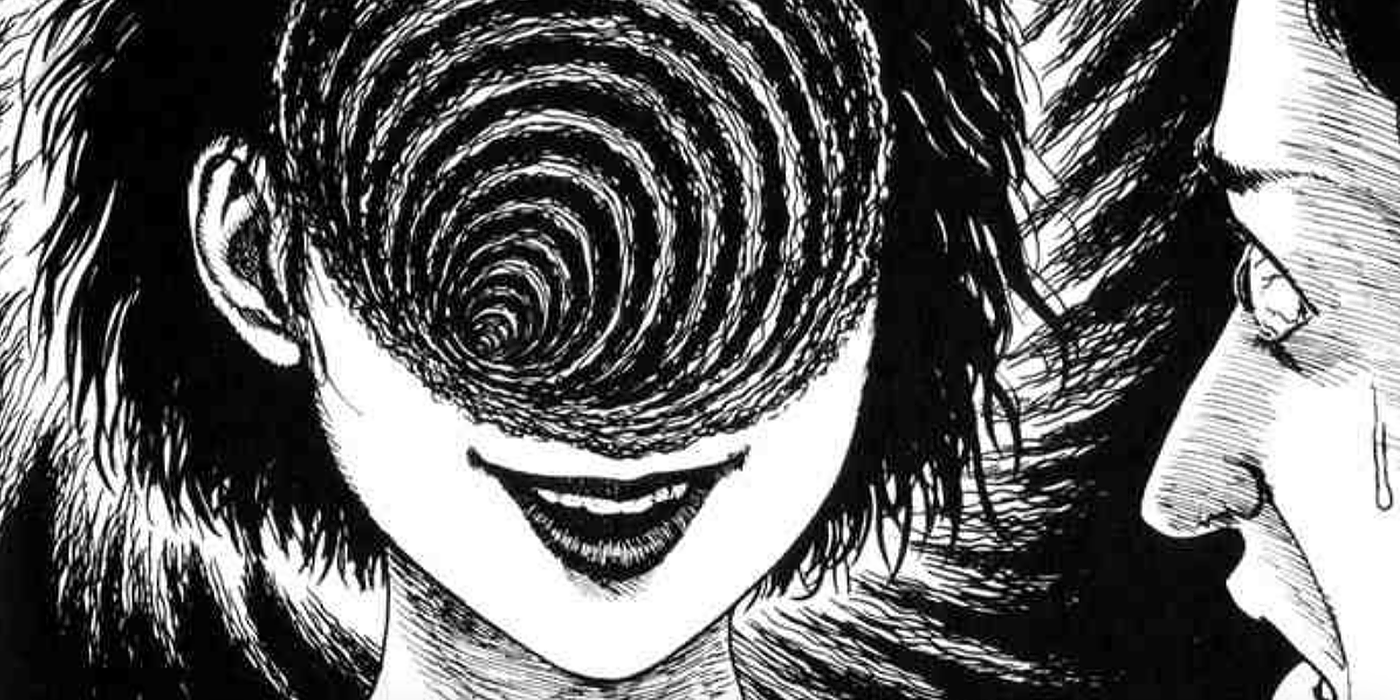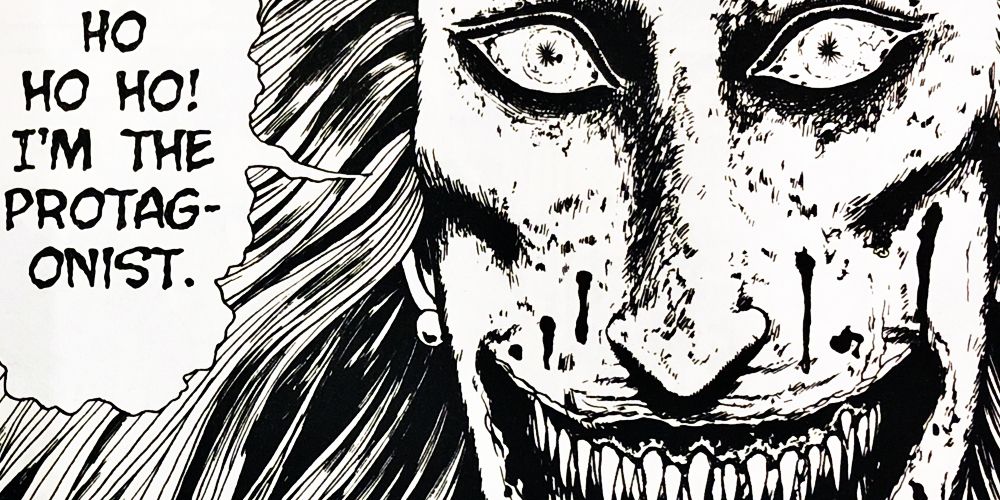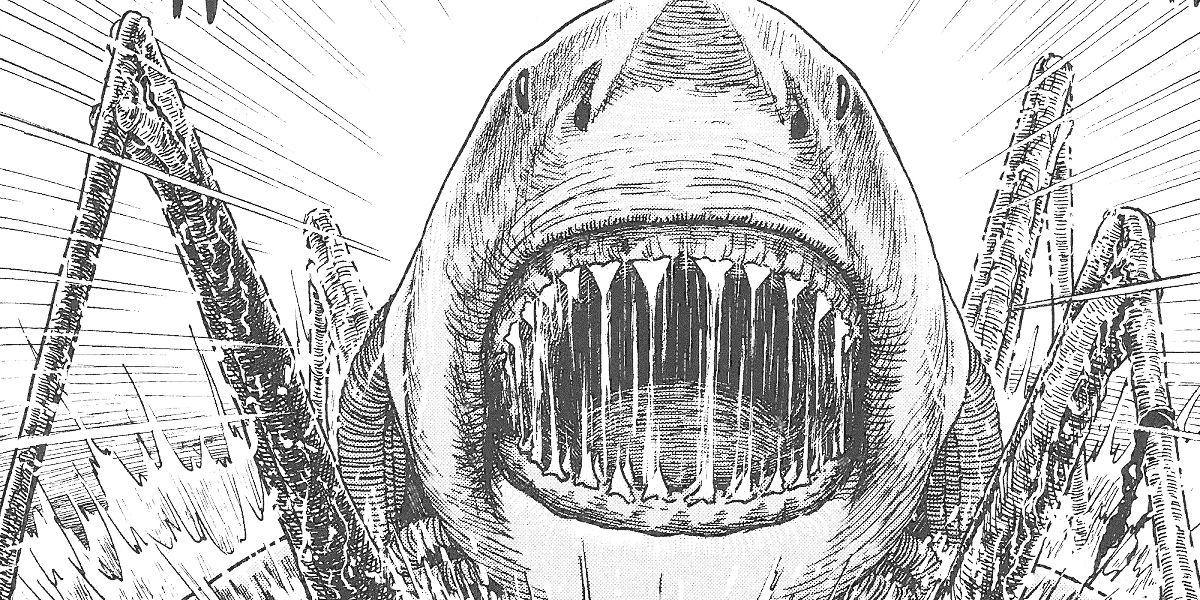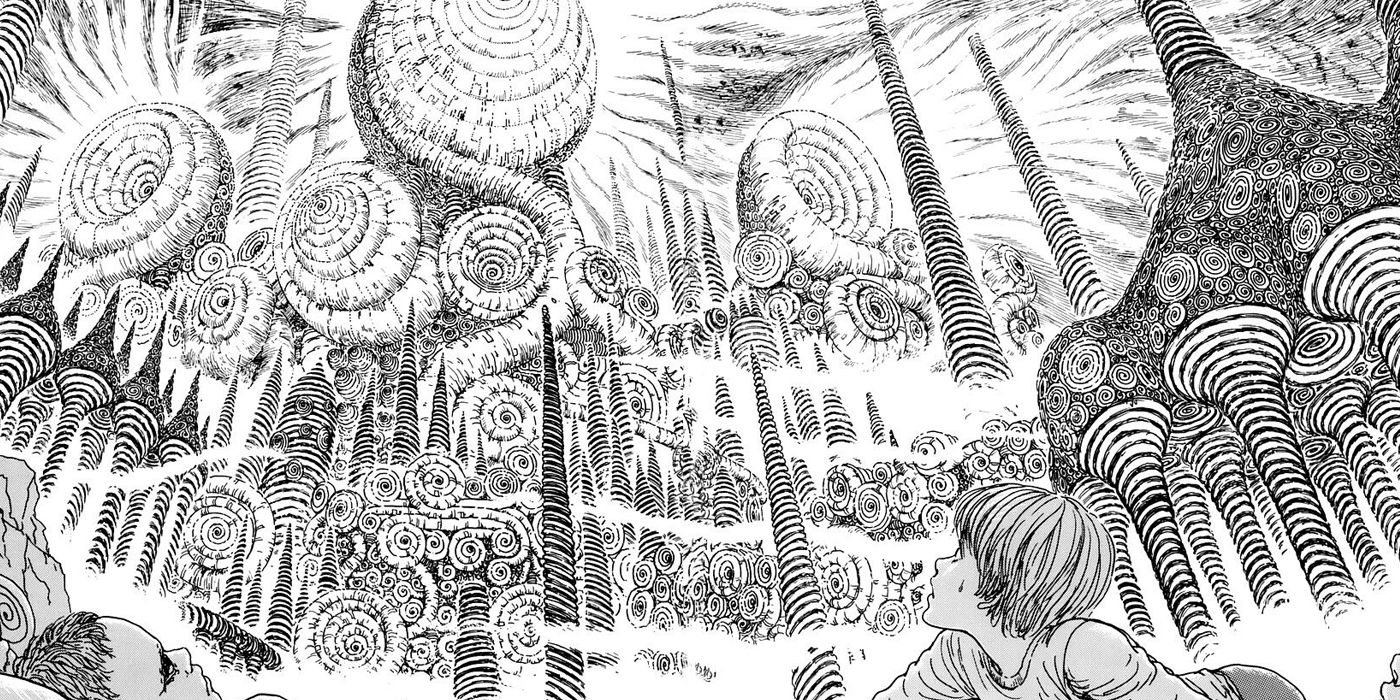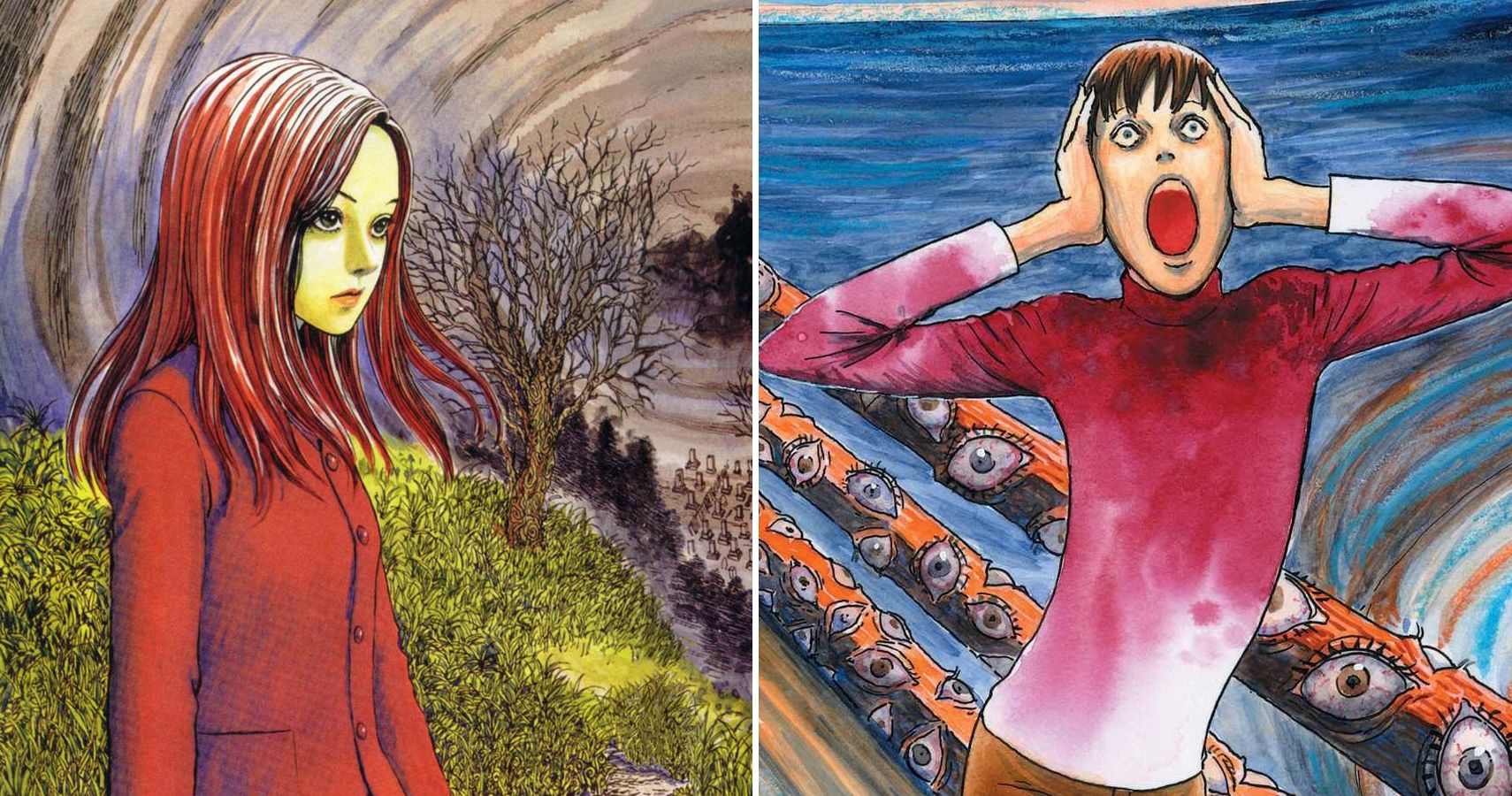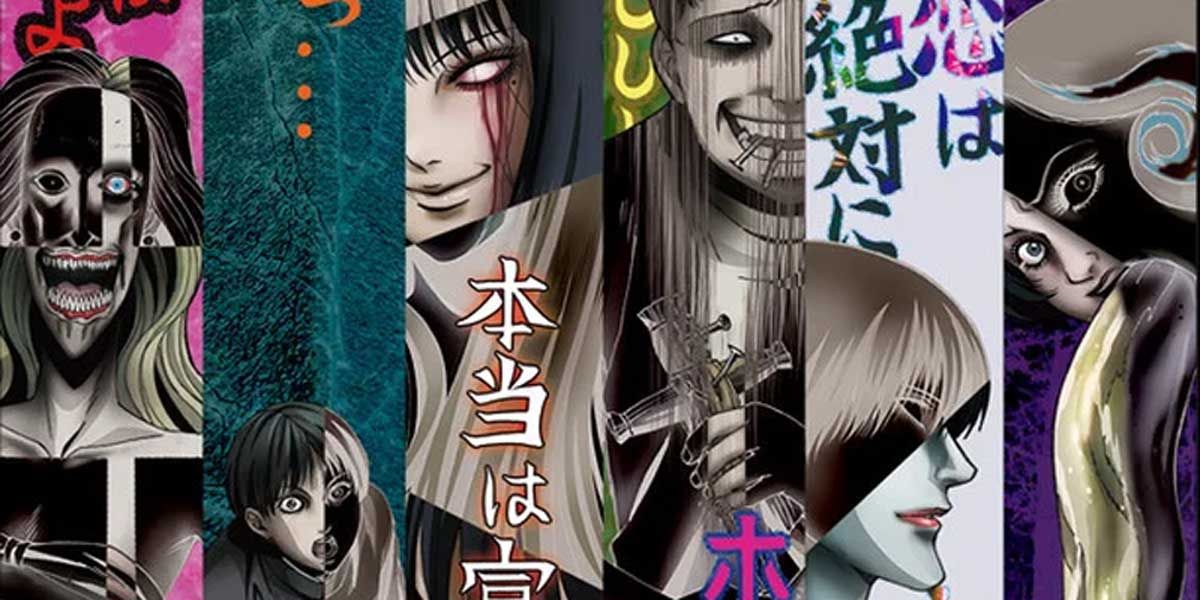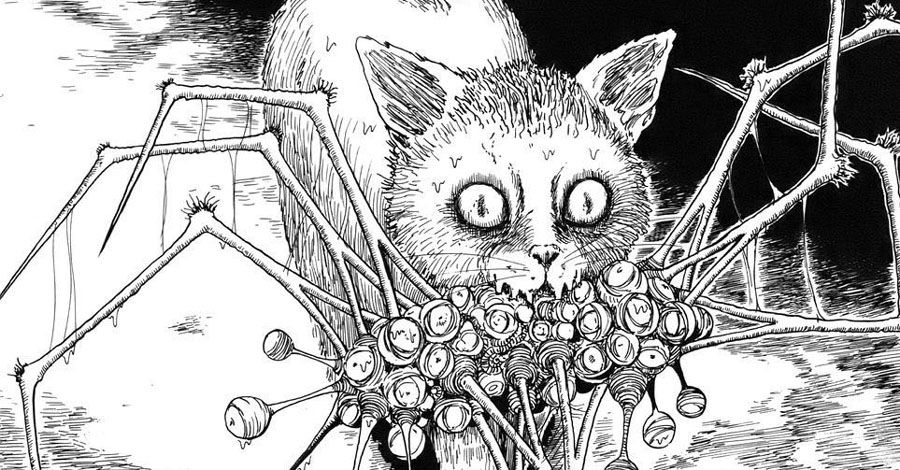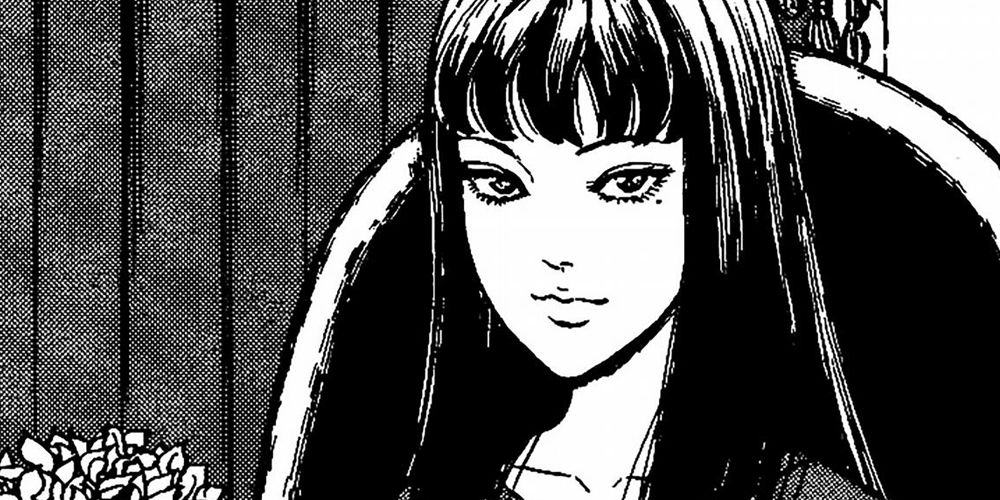Junji Ito is a legendary name for both manga and horror fans, and his 30-year career has lately been getting more and more mainstream attention outside of Japan, with 2019 and 2020 shaping up to be peak Ito-saturation point. The English translation of No Longer Human was published on September 4; Toonami is working on an Uzumaki anime adaptation that already has a sinister trailer, and Diablo 4, which is dripping with Ito’s influence, will be released in late 2020.
His work is a mix of body horror, uncannily detailed pictures and cosmic terror. Some of his best-known stories include Tomie, Uzumaki and Gyo, but his influence spans across all media. Ito wasn't always a mangaka. He started his adult life as a dental hygienist, working on his drawing after work. Halloween, a girl's magazine, simultaneously baffled and inspired him to create Suchi, one of his most terrifying characters, based on one of the models that appeared in one of the fashion magazines he'd purchased to research the story.
"She was scary, kind of weird," said Ito at the Toronto Comic Arts Festival in May. "And she was a fashion model, so she's supposed to be pretty, but she smiled like a monster… so that idea kind of got planted in my head, of the fashion model that’s also a monster," he then added, "But she has these fearsome powers to obtain work (despite her massive size and pointy teeth.)"
For three years, Ito worked during the day as a dental hygienist and produced enough manga to keep his editors happy during the night. This exhausting era of his life gave him two essential tools for his artistic career: the anatomy classes that he'd taken to obtain the dental hygienist title would come back with a bang in his body horror stories.
The second skill is a little less obvious. "I think the most unusual thing that I learned as a dental technician that I carry with me now, is how to modify my tools for making manga to fit my hands properly and to make them easier for me to use," Ito said at the same conference.
Gyo is the strange tale of zombie marine creatures on mechanical legs with the ability to take over the land, comprising all kinds of ocean dwellers, from the smallest sardine to the largest whale… Although the scariest of them all is a gigantic white shark. The question of whether this is Ito's way of dealing with climate change has popped up repeatedly, but he's been quick to dismiss the idea.
"I'm terrified of sharks," he said on multiple occasions. "The way I work is that an idea or image will appear into my mind, and then I will expand into that little nugget of weirdness. And then, after the fact, the ideas will get slapped on. With Gyo, it wasn't that I was writing about environmental things -- when I said that sharks are scary, and the thing about sharks is that if you don’t go into the ocean, they are not that scary… but if they came into land…"
For newcomers to Junji Ito's style, Gyo's premise might seem too outlandish to provoke fear in the reader, but it's actually the opposite: the almost absurd plot that overtakes the alleged protagonists almost immediately, combined with Ito's realistic style, makes the detailed, undead fish look like they could pop out of the page at any moment; the fact that it looks absurd makes it look terrifying and uncanny instead of funny.
But Junji Ito's arsenal isn't limited to horror -- he has also ventured into comedic slice-of-life manga. Ito created a manga about Yon and Mu, his real-life cats, where he narrates the process of becoming a cat lover despite his initial aversion to the idea. But this transformation into a cat daddy, which any other mangaka would have chibified, sweetened and exaggerated, gets the uncanny horror treatment, too.
The titular cats are drawn like sinister entities trying to take over Ito’s house; his wife, A-ko, the feline event instigator, rarely shows her pupils, and even Ito's slow mellowing is depicted as monstrous -- his face is a nightmarish vision the first time he picks up a kitten and utters, "I’m gonna eat you up!"
Ito also brings a new level of horror to the kitty litterbox, sparing no disgusting details to the readers, but because nothing horrible happens, the contrast between the absolutely mundane and the over-the-top horror imagery is what creates the comedy.
But his magnum opus are the three volumes of Uzumaki, the story of a town haunted by the idea of spirals -- yes, the geometrical shapes that appear almost everywhere in nature. One townie's obsession gives way to an eerie, absurd, and terrifying set of the events as a cosmic horror emerges from one of the most benign shapes in art. H.P. Lovecraft, who Ito cites as one of his biggest influences, would be proud.
"I'm strongly drawn to paranormal phenomena, to all the things that cannot happen in the real world, like extrasensory powers, ghostly apparitions, and so on," he said during an interview in Italy. "They're not exactly 'horror,' but I really like these things that are detached from reality."
To create Uzumaki's location, Ito drew from two sources of inspiration: the neverending Winchester Mystery House and the small country town he grew up in. "It was a place where the houses had been built next to each other, so you always felt the neighborhood's eyes on you," Ito said. "Was it scary? Well, it's not like the people wanted to mind other people's business, but anything happening was there for all to see," he then added, "Growing up in a place like that, even if it was my hometown, didn't allow me to feel at ease, so probably I have always been scared of it. This is certainly reflected in my works."
And still, even a master of horror has his limits and will not depict just about anything for fun. In Ito's case, it was his Halloween editor who gave him one of his first tips: to never write about illness or discriminatory issues in Japanese horror. Other subjects that he finds difficult to tackle because they hit too close are real-world horrific events (like the Holocaust), bullying, which he considers a tremendous societal problem, and the uncanny ability of people all over the world to accept blatant lies from their leaders without questioning anything.
Ito was also reluctant to draw sex scenes, but he recently broke that personal taboo while working in No Longer Human, a manga adaptation of Osamu Dazai's novel. That created a small problem at home, because his two daughters usually have free access to his body of work. "But I haven’t shown them No Longer Human," confessed Ito. "There are sex scenes in that, and I don't want them to think about their dad writing that. So I got to hide those."
Ito's influence in global media is almost all-encompassing: his work has been adapted both as anime series and, in the case of Tomei, as an ongoing movie saga that turned 21 this year, and he is, in turn, adapting literary classics to the medium of manga through his very particular lense.
Diablo 4's developer recently said that Ito's work was a significant inspiration for the game and, at one stage, Ito was going to collaborate with Guillermo del Toro and Hideo Kojima to create Silent Hills, a venture that Ito was reluctant to join because he knew nothing about video games. The three creators met twice, once informally for dinner and once at the Konami offices. "Del Toro wanted to take the terror of that place and push it out in the player's face, in a way," Ito said, describing the director's vision. "Once the meeting was over, we all went to karaoke. And then basically I didn't hear anything from anyone for a while; I was busy with work, and I didn’t have the time to start creating my own Silent Hill monsters or anything like that, and eventually I heard from sources that the plan just sort of got scrapped and that was that, that was the end of it."
But Junji Ito fans should rest reassured; they are not missing out of Silent Hill art from their favorite mangaka, because nothing was ever concrete. "It was just the one meeting; nothing exists, there are no roughs, there are no sketches, there's nothing I did for that project that exists," he said.
During a tour of the Winchester Mystery House, Ito confessed that in the past few years, he's been slowing down his output because he's having trouble finding new ideas, and that he's had to restructure his working hours to accommodate his day-to-day parental duties.
"Once you have kids, your life becomes centered on the kid. And taking them to cram school, waking them up, it takes time. Every day there's this time that you have to give over to these other people, I can't really dive deep into my work the way I used to, just sink in and live there." When asked about whether this shift has affected the way he creates stories, Ito shook his head. "I don't think that becoming a dad has changed my work thematically. It's not a great thing to get married and then have the style of your work change, I think, so I was very conscious of that, of not letting the stories of my manga become softer or more kind or anything."
Junji Ito's favorite authors are Kazuo Umezu, whose manga Makoto-chan he considers the best of all time, and, of course, H.P. Lovecraft. From Umezu, Ito appreciates the fine line that he navigates between horror and humor by taking up the human condition, digging into the its neurosis and pulling laughter out of it, which he tries to do in his own work. "The jokes allow me to create a moment for the reader to breathe in and sort of have a little relaxing, laughing moment."
What Ito loves about Lovecraft is a little different. "What really has always captivated me is the mood that the author can set, the process by which he leads to the scary scenes. For example, when he describes the townscape where a story is set, he also tells of a dark and sinister church that can be seen in the distance, and one immediately wonders what lurks in there." Ito also took direct inspiration from Lovecraft for Uzumaki. "The Lovecraftian influence is clear in the scene where we see a black lighthouse near the coast."
New fans can pick up any of his classic Ghost Stories collections, the Eisner Award-winning Frankenstein or Uzumaki itself, and they won't be disappointed, while those that prefer to ease into the deep waters of Ito's horror can start with Yon and Mu's kitty volumes.
KEEP READING: People Spiral Into Horror (Literally) In Uzumaki

